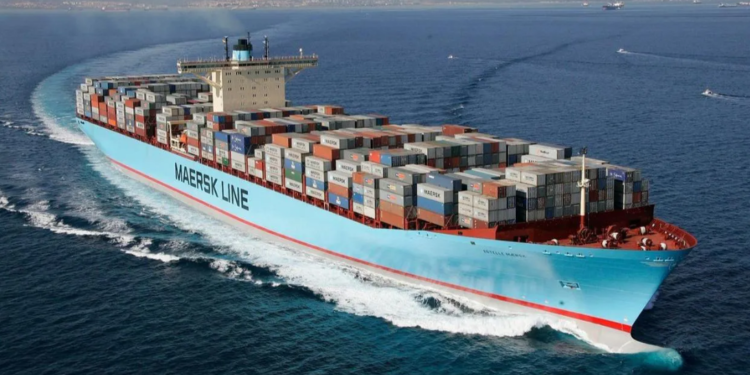Maersk, the Danish conglomerate in the transport, logistics and energy sectors will move 16 containers on Tuesday through Ganga Waterway from Varanasi to Kolkata. “Maersk Line will move 16 containers on river Ganga (National Waterway-1) from Varanasi to Kolkata tomorrow. The firm is onboard India’s inland waterways for the first time,” said the ministry. Maersk is the world’s largest container shipping company and if the first assignment completes successfully then it will carry out regular transportation through the route. Many firms like PepsiCo, Emami Agrotech, IFFCO Fertilizers, Dabur have also moved containers through Ganga highway.
National Waterway-1 has been built as part of the central government’s ‘Jal Marg Vikas’ Project (JMVP) that aims to develop the stretch of the river Ganga between Varanasi and Haldia for navigation of large vessels weighing up to 1,500-2,000 tonnes. NW-1 is developed through financial and technical assistance from Word Bank with a cost of Rs 5,369 crore under the banner of Jal Marg Vikas Project (JMVP).
The 1,360 km stretch of the Ganga River between Varanasi & the seaport of Haldia being named as National Waterway (NW)-1 would facilitate the transport of cargo and thereby result in the economic development of the region. The NW-1 passes through Uttar Pradesh, West Bengal, Jharkhand, and Bihar, serving major cities like Varanasi, Prayagraj, Patna, Howrah, Calcutta, Haldia etc.
Junaid Ahmad, World Bank Country Director for India in his statement said, “Harnessing the mighty rivers of South Asia to build an effective multi-modal transport strategy will give the region a competitive edge on the global scene. This project will allow India to move goods seamlessly between road, rail, and water, and bring down logistics’ costs. Importantly, this Project will help IWAI put in place environmentally-sustainable strategies for inland navigation that can be replicated on other waterways in India and other countries.”
Transport minister Nitin Gadkari estimated that the growth of Waterways will create more than 1.25 Lakh job opportunities. Ours is a pro-investment nation and we need to identify the sectors that will help in increasing the jobs for the youth of our country, he added.
India is one of the largest importers of automotive fuels in the world. The growth in the economy has pushed the consumption of crude oil in the country and this also has raised the import bills of the country. Freight Transportation through waterways could bring the import bills down because it is more fuel efficient. In one liter of diesel, ships could carry 105 tonnes of load through waterways while roadways and railways can carry only 24 tonnes and 85 tonnes in the same amount of diesel respectively.
In terms of fiscal efficiency too, waterways transportation is far more efficient than road or rail. The countries in Europe and North America developed sound infrastructure for waterways transportation over the decades. Our eastern neighbor also developed an efficient water transportation system in a very short period of time. But previous Indian governments had a lackluster attitude towards developing water land transportation infrastructure. Modi government gave the responsibility to develop infrastructure to one of the best performing ministers, Nitin Gadkari. In upcoming years many more positive developments could be seen in waterways transportation. The development of waterways will do justice to the historical importance of rivers in Indian civilization.































